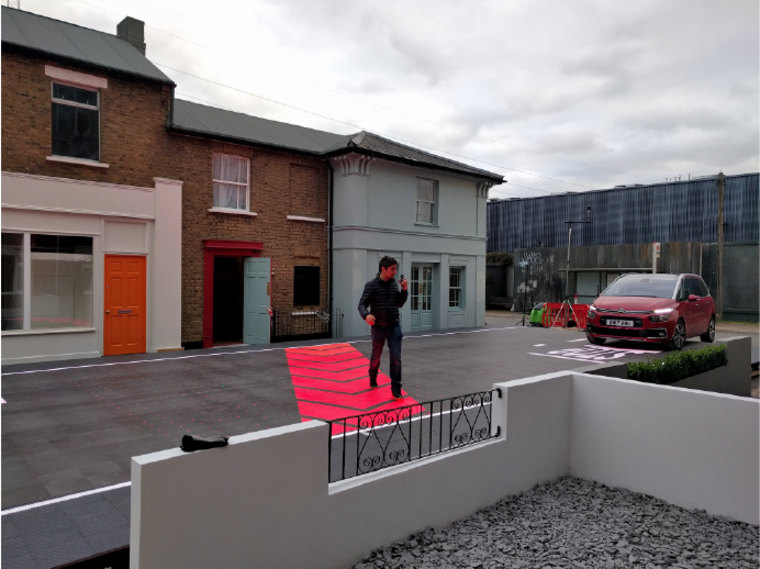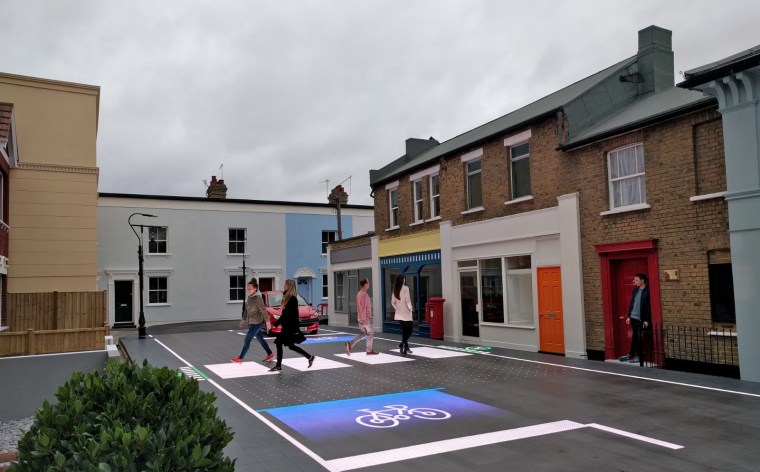Alphabet’s urban technology spinoff, Sidewalk Labs, announced yesterday that it would transform 800 acres of Toronto into a high-tech smart city, complete with drone deliveries and robotic taxis.
A key part of that future vision is rethinking the way cars and people interact, with the goal of helping prevent the more than 270,000 annual pedestrian fatalities around the world.
Until now, much of that effort — from Alphabet and others — has been dedicated to building self-driving cars that steer around obstacles and automatically brake to avoid collisions. But a London-based design firm recently unveiled a new intelligent crosswalk that’s just as smart as today’s autonomous cars.
The crosswalk, reinvented
The Starling Crossing replaces dumb asphalt with a nonslip road surface that's embedded with computer-controlled LED lights that keep vehicles and pedestrians safely separated. A working prototype, located in London, relies upon some of the same basic technology used in self-driving cars.
Cameras mounted on streetlights feed images of the area to a computer vision system that recognizes and tracks the movement of people, cars, and cyclists. A neural network crunches the data to predict the path of every road user — and, if necessary, light up the road surface instantaneously to warn of danger.
If a smartphone-distracted pedestrian starts to cross against the light, for instance, the sidewalk beneath him lights up with a personalized warning signal that’s impossible to ignore. If a child darts between parked cars, drivers are alerted with a red “buffer zone” that forms on the road around him.

“We wanted to create a pedestrian crossing technology that puts people first, responding to their needs,” says Usman Haque, founding partner of Umbrellium, the London-based firm. “The interactive road surface can generate a pedestrian crossing at any location, or create colored road markings to serve as guidance or warning to people who might be about to get into a dangerous situation.”
The crosswalk has advantages for vehicles as well as pedestrians. If no pedestrians are in the area, it disappears, reappearing only when a pedestrian stands facing the road. The crosswalk can also change size and shape — expanding to accommodate rush-hour crowds, for example, or moving its stop lines back in wet weather to accommodate cars’ longer stopping distances.
In a way, the crosswalk even gives road users eyes in the backs of their heads. Imagine a bicyclist riding beside a van as a pedestrian starts to cross the road ahead. The crosswalk’s computer calculates whether the cyclist is able to see the pedestrian. If not, it flashes a warning on the road ahead.
Money and time
More work is needed before it can be deployed — even in an experimental form, such as at Alphabet’s Toronto site.
“There is a lot more safety testing needed and a future iteration would need to explore further interaction through texture, height, and edges as well audible signals,” says Haque. “There is also more work to be done conducting material and durability tests.”
And reimagining millions of miles of roads won’t come cheap, warns Oliver Carsten, professor of transport safety at Leeds University in the UK.
“The main issue is the sheer cost of equipping the roadway with the necessary LED lights,” he says, adding that crossings like Starling are a bit of a gimmick. “What pedestrians really need is infrastructure and vehicles that allow them to cross where they want to.”
In the short term, pedestrians still need to pay at least as much attention to the dumb roads around them as to the smartphones in their hands.

